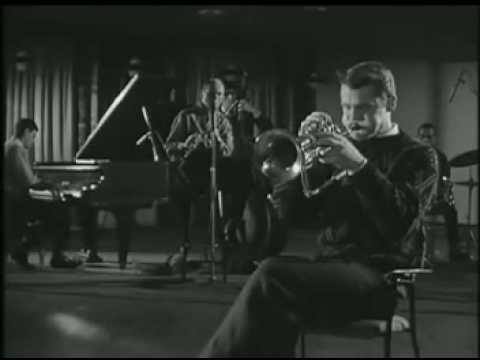David's Top 100
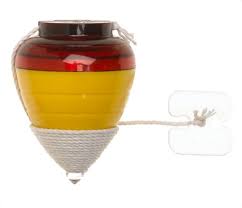
Number 73
McKinney's Cotton Pickers - Just a Shade of Corn
Just a Shade of Corn
https://www.youtube.com/watch?v=oUIqXb5yyUw
McKinney's Cotton Pickers were an African American jazz band founded in Detroit in 1926 by William McKinney, who expanded his Synco Septet to ten pieces. Cuba Austin took over for McKinney early on drums. Between 1927 and 1931, they were one of the most popular African-American bands. Many of their records for Victor were bestsellers.
In 1927 Fletcher Henderson's arranger and saxophone player Don Redman was invited to become the Cotton Pickers' musical director, and he assembled a band which rivalled Henderson's and Duke Ellington's. Aiding Redman with arrangements and rehearsals with the band was the talented trumpeter-arranger John Nesbitt. The line-up in 1928 was Cuba Austin (drums and vocals), Prince Robinson (clarinet, tenor saxophone), George Thomas (clarinet, alto saxophone, tenor saxophone, vocals; Redman (arranger, clarinet, alto saxophone, baritone saxophone, vocals, and leader), Dave Wilborn (banjo, vocals), Todd Rhodes (piano, celeste), Ralph Escudero (tuba), Nesbitt, Claude Jones (trombone), Milton Senior, Langston Curl (trumpet).
Other bandmembers at one time or another included George Bias (vocals), Benny Carter (clarinet, alto saxophone), Doc Cheatham (trumpet), Bill Coti (vocals), Ed Cuffee (trombone), Lois Deppe (vocals), Jimmy Dudley (clarinet, tenor saxophone), Robert Inge (clarinet, (alto saxophone), Quentin Jackson (trombone), Moxey-Hilton Jefferson (clarinet, alto saxophone), James P. Johnson (piano), Buddy Lee (trumpet), Donald King (vocals), Frank Marvin (vocals), Theodore McCord (clarinet, tenor saxophone), Jim Napier (vocals), Milton Senior (trumpet), Rex Stewart (cornet), Billy Taylor (tuba). Towards the end of 1929, a number of soloists who were not regular members of the band sat in for a series of recordings. These included Sidney de Paris (trumpet), Leonard Davis (trumpet), Coleman Hawkins (clarinet, tenor saxophone), Fats Waller (piano, celeste), Joe "Fox" Smith (trumpet, cornet) and Kaiser Marshall (drums).
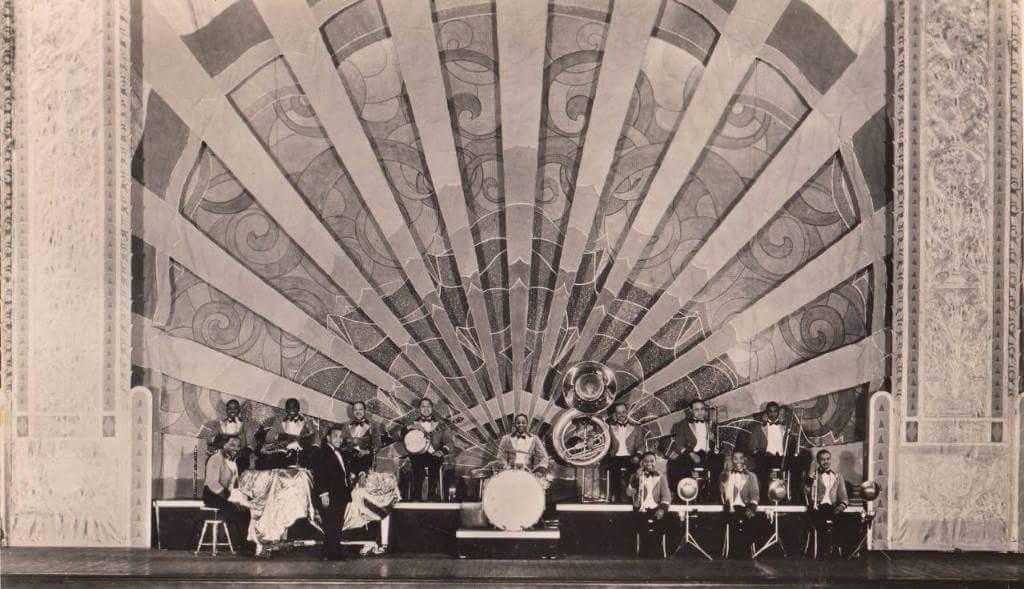
Number 72
Thelonious Monk STRAIGHT NO CHASER
https://www.youtube.com/watch?v=IrucUjaxjO4
"Straight, No Chaser" is a jazz standard composed by Thelonious Monk. It was first recorded on Monk's Blue Note Sessions in 1951. It has been recorded numerous times by Monk and others and is one of Monk's most covered songs.[1] It is a 12-bar blues in B♭ which, like one of his other B♭ blues, "Blue Monk", makes creative use of chromatics in the melody. Miles Davis recorded a famous version on his Milestones album, in which the tune is played in F rather than B♭.
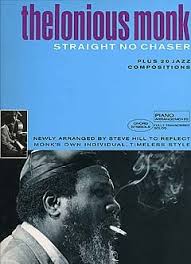
Number 71
Marian McPartland I COULD WRITE A BOOK
https://www.youtube.com/watch?v=Yuwr2nz_A6I
Ms. McPartland was a gifted musician but an unlikely candidate for jazz stardom. She recalled in a 1998 interview for National Public Radio that shortly after she arrived in the United States in 1946, the influential jazz critic Leonard Feather, who himself was born in England and who began his career as a pianist, said, “Oh, she’ll never make it: she’s English, white and a woman.”
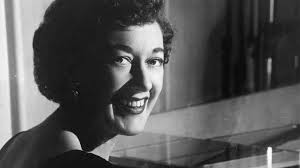
Number 70
Louis Bellson EXPLOSION
Explosion 1979
https://www.youtube.com/watch?v=g3SQwoAA_2U
Louie Bellson was deemed “the world’s greatest musician” by Duke Ellington, “the epitome of musical talent and a very gifted composer and arranger” by Oscar Peterson, and “the best person I ever met” by Tony Bennett.
He performed on more than 200 albums with a range of artists, including Duke Ellington, Oscar Peterson, Count Basie, Benny Goodman, Tommy Dorsey, Harry James, Woody Herman, Oscar Dizzy Gillespie, Louie Armstrong, Lionel Hampton, Sarah Vaughan, Ella Fitzgerald, James Brown, Sammy Davis Jr., Tony Bennett, Mel Torme, Joe Williams, Wayne Newton, and Bellson's first wife Pearl Bailey.

Number 69
Kenny Dorham LOTUS BLOSSOM
Kenny Dorham Quartet - Lotus Blossom
https://www.youtube.com/watch?v=-TwoXLZo6-c
Kenny Dorham's soft, energetic, be-bop style and confident, smooth lyrical playing has influenced countless musicians. One of the great trumpet pioneers of the bebop era, Kenny had the misfortune to play beneath the shadows cast by Gillespie, Fats Navarro, Clifford Brown and Miles Davis. He worked with most of the giants of the music in the '40s and '50s, and continued to lead his own groups through the 60s. Many of his compositions have become jazz standards (Blue Bossa, Prince Albert, Lotus Blossom, Una Mas, Whistle Stop). He used to "ghost" many of his charts, which were published under the name of Walter "Gil" Fuller.

Number 68
Anita O'Day Tea for Two/Sweet Georgia Brown
Live at Newport
https://www.youtube.com/watch?v=DcMmVGrzpy8
There was her technique - huskytoned, steel-hard in phrasing, with immaculate timing, an unsentimental tenderness and a shrewd wit. And there was her attitude to the male-dominated business in which she was working. O'Day's career was full of setbacks, yet her reputation as one of the most intelligent, technically skilful and independent of jazz singers never dimmed, and she performed into her 80s.

Number 67
Chris Connor BLAME IT ON MY YOUTH
Blame It On My Youth
https://www.youtube.com/watch…
Frustrated by the lack of vocal musical opportunities in her hometown, Connor pulled up stakes and headed east in 1949. She was hired by Claude Thornhill and spent the next five years touring with his orchestra. Then, while appearing with Jerry Wald’s band, she received the phone call she had been dreaming of. June Christy, Stan Kenton’s current vocalist, had heard Connor on a radio broadcast and recommended her to the orchestra leader, who chose her from dozens of other vocalists eager for the job. “My voice seemed to fit the band,” Connor said, “with that low register like Anita’s and June’s.

Number 66
Art Blakey and the Jazz Messengers... Along Came Betty
The instrumental version of "Along Came Betty" was composed by Benny Golson and first appeared on Art Blakey's album entitled Jazz Profile in 1954. The composition was inspired by a woman of the same name that the composer was dating at the time. A vocal rendition of the song was performed as early as the mid-'50s by singer and songwriter Jon Hendricks, and this vocal version was reissued on a compilation in 1999 entitled Bebop Singers. "Along Came Betty" features bebop's hyperkinetic hipness with a bluesier feel and a funkier beat.
Along Came Betty
https://www.youtube.com/watch…

Number 65
Conte Condoli Quartet FLAMINGO
What makes this great is that it it totally unspectacular... but it is moving, tasteful and perfect.
Secondo "Conte" Candoli (July 12, 1927–December 14, 2001) was an American jazz trumpeter based on the West Coast. He played in the big bands of Woody Herman, Stan Kenton, Benny Goodman, and Dizzy Gillespie, and in Doc Severinsen's NBC Orchestra on The Tonight Show Starring Johnny Carson. He played with Gerry Mulligan, and on Frank Sinatra's TV specials. He also recorded with Supersax, a Charlie Parker tribute band that consisted of a saxophone quintet, the rhythm section, and either a trumpet or trombone.
Flamingo
https://www.youtube.com/watch?v=J5aeWdqrBbs
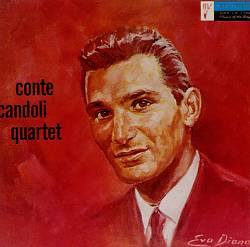
Number 64
Sam Jones & Co. DOWN HOME
Down Home
https://www.youtube.com/watch?v=n4qMcTrim9k
Down Home is the third album by bassist and cellist Sam Jones featuring performances recorded in 1962 and released on the Riverside label.
Sam Jones - cello
Frank Strozier - flute
Joe Zawinul - piano
Ron Carter - bass
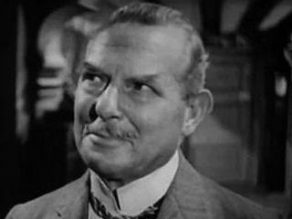
Number 63
Minor Swing - Django Reinhardt & Stéphane Grappelli
https://www.youtube.com/watch?v=VpmOTGungnA
"Minor Swing" is a popular Gypsy jazz tune composed by Django Reinhardt and Stéphane Grappelli. It was first recorded by The Quintet of the Hot Club of France in 1937. It was recorded four other times throughout Reinhardt's career and is considered to be one of his most covered compositions, as well as a Gypsy jazz standard.
The song was released as a 78 single on the French Swing label in 1937 as SW.23A, Matrix #OLA1990-1, featuring Django Reinhardt and Stéphane Grappelli under the group name Quintette du Hot Club de France.
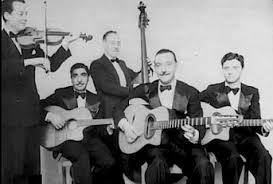
Number 62
HOAGY CARMICHAEL Stardust
Howard Hoagland "Hoagy" Carmichael (November 22, 1899 – December 27, 1981) was an American composer, pianist, singer, actor, and bandleader. He is best known for composing the music for "Stardust", "Georgia on My Mind", "The Nearness of You", and "Heart and Soul", four of the most-recorded American songs of all time.
American composer and author Alec Wilder wrote of Carmichael in American Popular Song: The Great Innovators, 1900–1950 that he was the "most talented, inventive, sophisticated and jazz-oriented" of the hundreds of writers composing pop songs in the first half of the 20th century

Number 61
Fats Navarro Quintet 1947 Barry's Bop
Barry's Bop
https://www.youtube.com/watch?v=2I3yYxoP0PA
Theodore "Fats" Navarro (September 24, 1923 – July 7, 1950[1]) was an American jazz trumpet player. He was a pioneer of the bebop style of jazz improvisation in the 1940s. He had a strong stylistic influence on many other players, most notably Clifford Brown.
Navarro played in the Andy Kirk, Billy Eckstine, Benny Goodman, and Lionel Hampton big bands, and participated in small group recording sessions with Kenny Clarke, Tadd Dameron, Eddie "Lockjaw" Davis, Coleman Hawkins, Illinois Jacquet, Howard McGhee, and Bud Powell. In Charles Mingus's somewhat counter-factual autobiography Beneath the Underdog, Navarro and Mingus strike up a deep friendship while touring together.

Number 60
Helen Merrill - "Night And Day (Cole Porter)"
https://www.youtube.com/watch?v=o-mDkLIqcQg
Parole e Musica: Words and Music was recorded in Italy with Umiliani's orchestra in the early 1960s while Merrill was living there. The LP features the unusual additions preceding each song, of spoken translations of eloquent Italian word lyrics, complementing the ballads and torch songs. The album has an atmospheric edge in the style of a street busker, provided by a solo musician backing up Merrill's performance, which is brooding, smoky, increasingly foreboding, regretful, mournful, desolate, and finally, melancholy yet hopeful. The many standard songs are elevated to classic status by Merrill's perfect phrasing, sublime high notes, and emotionally flawless renditions.
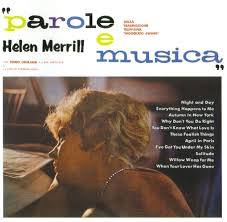
Number 59
Summertime - The Bill Potts Big Band
Summertime
https://www.youtube.com/watch?v=yKreD6XZo9w
The Jazz Soul of Porgy and Bess was of the first Jazz albums with gatefold cover containing pages of extensive notes and photos from the sessions, published by United Artists as a numbered Limited Edition.
Potts layers and intertwines New York’s Finest jazzmen in a whirlwind of hot brass and even hotter soloists. It is the spirit of Porgy and Bess, the stage show musical.

Number 58
Ella Fitzgerald
Ella Fitzgerald ft Buddy Bregman Orchestra - Bewitched, Bothered & Bewildered (Verve Records 1956)
https://www.youtube.com/watch?v=Z3Y7TpNi3x0
Verve Anthology
http://www.discogs.com/Ella-Fitzgerald-The-Verve-…/…/6353529
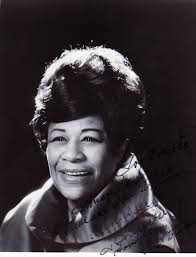
Number 57
Woody Herman and Mike Bloomfield
Hitchhike on the Possum Trot Line
https://www.youtube.com/watch?v=Ghmbx1Oli4c
Woody Herman recorded with many different types of musicians over his years as a soloist and as a mainstream big-band leader. This was an idea that jazz writer Ralph Gleason suggested: to record an album with guitarist Mike Bloomfield, a young blues & rock musician, who had already established himself with Paul Butterfield's Blues Band and some record dates under his own name. Woody and Mike were both excited about the prospect of working together. The band had the charts ready for Mike, so he just stepped in, plugged in and wailed. Maybe some "purists" would find this album beneath the bulk of the band's work, but that is just NOT WOODY!! He was always looking to expand horizons and try the new things. (And since jazz is not a "pure" music, but mostly borrows from other forms, that's what keeps it FRESH).

Number 56
Dizzy Gillespie 1941 Stardust Kerouac
https://www.youtube.com/watch?v=cgpl1OvriJQ
Esoteric LP from the 1960s of Jerry Newman's famous direct-to-disc live recordings in Harlem of Gillespie fronting, Thelonious Monk, Don Byas, Kenny Clarke, Kenny Kersey, Joe Guy, Nick Hinton. "and the House Band at Monroe's".

Number 55
Barney Kessel (weith Oscar Peterson)
Watch What Happens
https://www.youtube.com/watch?v=lfIVeSsEMdI
Barney Kessel (October 17, 1923 – May 6, 2004) was an American jazz guitarist born in Muskogee, Oklahoma. Noted in particular for his knowledge of chords and inversions and chord-based melodies, he was a member of many prominent jazz groups as well as a "first call" guitarist for studio, film, and television recording sessions. Kessel was a member of the group of session musicians informally known as the Wrecking Crew.

Number 54
Lenny Breau - Lullaby of Birdland
Lullaby of Birdland
https://www.youtube.com/watch?v=VFdETRF87o0
Leonard Harold "Lenny" Breau (August 5, 1941 – August 12, 1984) was an American guitarist and music educator. One of the most admired guitarists of his generation in musician's circles in the United States, he was known for blending many styles of music including: jazz, country, classical and flamenco guitar. Breau, inspired by country guitarists like Chet Atkins, used fingerstyle techniques not often used in jazz guitar, and with his use of the 7-string guitar and approach to the guitar like a piano, opened up new possibilities for the instrument.

Number 53
Susannah McCorkle... TRISTE
https://www.youtube.com/watch…
McCorkle was born in Berkeley, California. She studied modern languages at the University of California, Berkeley. McCorkle began singing professionally after hearing recordings of Billie Holiday in Paris in the late 1960s. She nearly became an interpreter at the European Commission in Brussels, but moved instead to London in 1972 to pursue a career in singing. While in the UK, she made two albums which, although well received, enjoyed only limited circulation.
In the late 1970s, McCorkle returned to the United States and settled in New York City, where a five-month engagement at the Cookery in Greenwich Village brought her to wider public attention and elicited rave reviews from critics.
During the 1980s, McCorkle continued to record; her maturing style and the darkening timbre of her voice greatly enhanced her performances. In the early 1990s, two of the albums McCorkle made for Concord Records, No More Blues and Sábia, were enormously successful and made her name known to the wider world. She was recorded by the Smithsonian Institution which at the time made her the youngest singer ever to have been included in its popular music series. McCorkle played Lincoln Center's Avery Fisher and Alice Tully Halls five times and Carnegie Hall three times, and was featured soloist with Skitch Henderson and the 80-piece New York Pops in a concert of Brazilian music.
Number 52
JOE ALBANY Autumn in New York
https://www.youtube.com/watch?v=Xy4xsY1TQZk
Joe Albany (born Joseph Albani; January 24, 1924 – January 12, 1988) was an American modern jazz pianist. He was among the few white pianists to have played bebop with Charlie Parker.
Albany was the focus of a 1980 documentary titled, Joe Albany... A Jazz Life. His daughter Amy-Jo wrote a memoir about her father called, Low Down: Junk, Jazz, and Other Fairy Tales from Childhood. The book was adapted for the screen and released in 2014 as the biopic Low Down

Number 51
Ahmad Jamal Trio- Ahmads Blues
https://www.youtube.com/watch…
He made his first sides in 1951 for the Okeh label with The Three Strings (which would later also be called the Ahmad Jamal Trio, although Jamal himself prefers not to use the term "trio"): the other members were guitarist Ray Crawford and a bassist, at different times Eddie Calhoun (1950–52), Richard Davis (1953–54), and Israel Crosby (from 1954). The Three Strings arranged an extended engagement at Chicago’s Blue Note, but leapt to fame after performing at the Embers in New York City where John Hammond saw the band play and signed them to Okeh Records. Hammond, a record producer who discovered the talents and enhanced the fame of musicians like Benny Goodman, Billie Holiday, and Count Basie, also helped Jamal’s trio attract critical acclaim. Jamal subsequently recorded for Parrot (1953–55) and Epic (1955) using the piano-guitar-bass lineup. The trio's sound changed significantly when Crawford was replaced with drummer Vernel Fournier in 1957, and the group worked as the "House Trio" at Chicago's Pershing Hotel. The trio released the live album Live at the Pershing: But Not For Me, which stayed on the Ten Best-selling charts for 108 weeks. Jamal's well known song "Poinciana" was first released on this album.
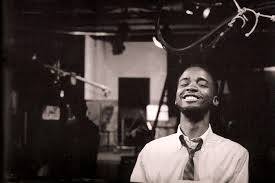
Number 50
Chet Baker Live Belgium 1964 Time After Time
https://www.youtube.com/watch?v=yuNy5_ojif8
A stunning musical and video experience.
Chet Baker... it seemed to me that music meant everything to him, life, very little.
